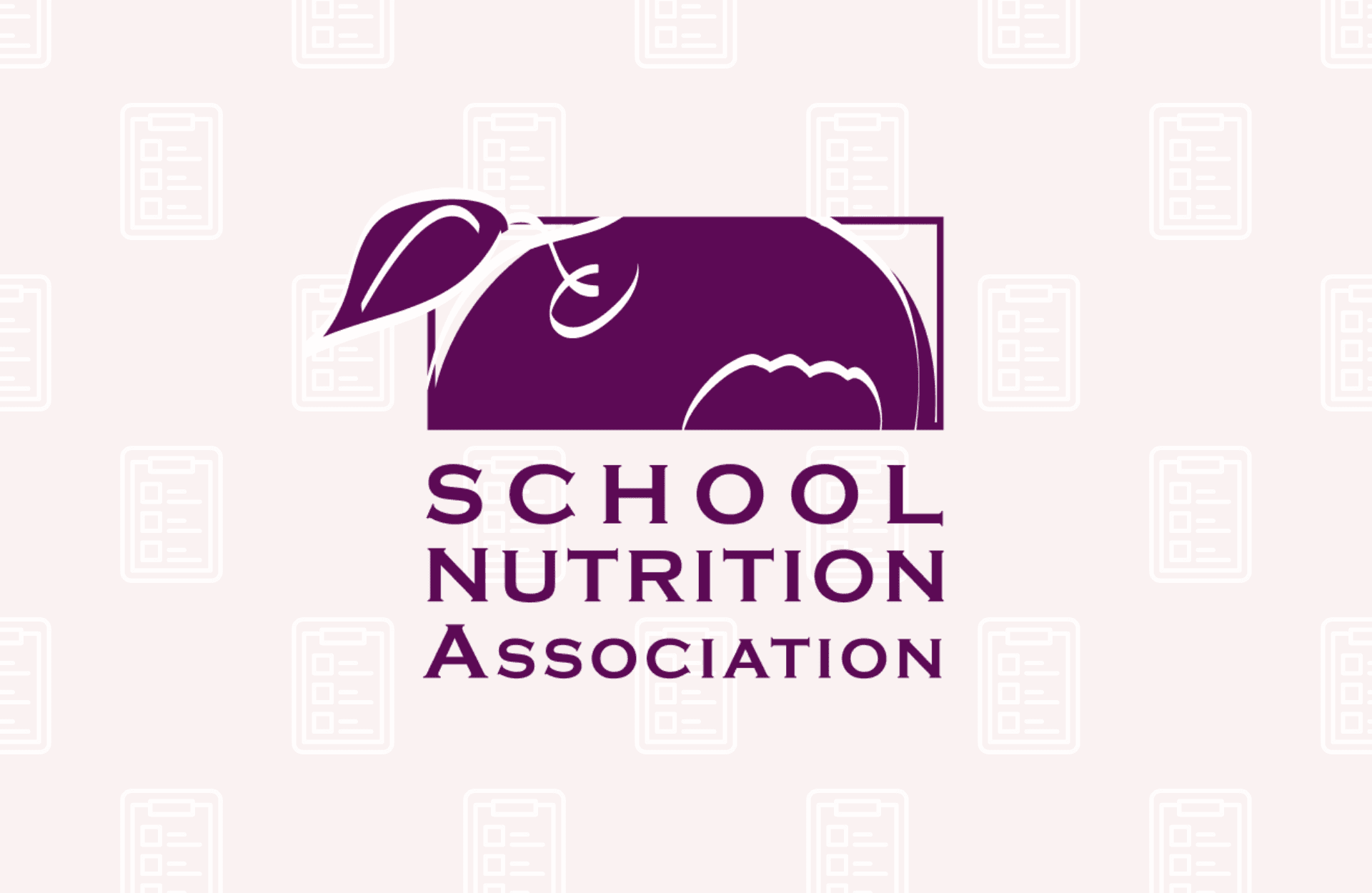FOR IMMEDIATE RELEASE:
Contact: Diane Pratt-Heavner
301-686-3124
media@schoolnutrition.org
Myth vs. Fact on Healthy, Hunger-Free Kids Act School Meals Implementation
2014-05-22
National Harbor, MD (May 22, 2014) – The School Nutrition Association (SNA), representing 55,000 school nutrition professionals working in cafeterias nationwide, is calling on Congress to provide reasonable flexibility to help schools plan healthy meals that students will eat.
Some critics of providing relief to struggling school meal programs have released misleading information about the challenges schools have faced under the new regulations:
MYTH: “Over 90 percent of schools report that they are successfully meeting the updated nutrition standards.”
FACT: USDA has no data to show that 90% of schools are “successfully” meeting standards. Schools were not asked to report on how the standards have impacted student participation, costs, revenues and food waste.
USDA’s certification review process only evaluates one week of school menus to determine if schools are compliant with the standards, and does not require schools to report on whether menu adjustments are sustainable and accepted by students.
Additionally, not a single school has been certified as meeting sodium limits, the requirement that 100% of grains be whole grain rich, or the mandate to serve a full cup of fruit at breakfast. These requirements go into effect on July 1, 2014, and school cafeteria professionals nationwide have relayed to Congress that they are unprepared to meet them.
While there have been many successes, such as offering a wider variety of vegetables and exposing students to more whole grains, the significant challenges and unintended negative consequences of meeting the standards are a reality for schools across the country.
MYTH:“School lunch revenue is up.”
FACT: School meal programs are not required to report revenues and expenditures to USDA. There has not been any USDA data released indicating adjustments to federal reimbursements have compensated for the significant increased costs associated with meeting the new nutrition standards, as well as escalating food prices.
USDA acknowledged in the final regulations that under the new standards “estimated increases in food and labor costs are equivalent to about 10 cents for each reimbursable school lunch and about 27 cents for each reimbursable breakfast in FY 2015.” While no support is provided for breakfast, these rough estimates far exceed the 6 cents per lunch that schools have been provided to meet the new standards.
SNA’s 2013 Back to School Trends Survey found that in the 2012-2013 school year 47% of school meal programs reported revenue declined while more than nine of ten reported food costs were up. In addition, 54.3% of school nutrition district directors anticipated that reimbursement rates would be insufficient to cover the costs of producing school lunches this school year, with another 23.6% reporting they were “not sure” reimbursements would cover costs.
Here are specific examples of school meal program budgetary challenges under the new standards:
- Since the new standards took effect, Mead School District (Washington) student lunch participation is down by 4.5% while produce costs have increased over $30,000. This year the program budget will be in the red for the first time in 5 years, forcing the program to reduce labor.
- This year, Shawnee Public Schools (Oklahoma) has experienced an 80% increase in costs of their produce and grain purchases.
- In an effort to combat student plate waste, Alexandria Public Schools (Virginia) switched from serving whole apples to sliced apples. The change cost the meal program $10,000 per year.
- One Connecticut school district with an enrollment of 9,800 students and 17 percent free/reduced price meal eligibility is losing money for the first time in decades. Last month, the program operated at a $98,000 loss, down from a surplus of $198,000 in 2011.
- Spring Independent School District’s (Texas) annual produce bill has increased $290,400 since last year. At the same time, their annual paid lunch participation has declined by 14,672 meals.
- During the 2012-13 school year, Seattle Public Schools (Washington) experienced a $117,839 annual increase in produce costs, which contributed to an end of the year loss of $257,668.
In school year 2011-12, before the new standards took effect, the district enjoyed a $83,531 surplus.
MYTH:“Participation is increasing substantially in many areas of the country.”
FACT: USDA’s state level participation data shows that nearly every part of the country has experienced decreases in student lunch participation under the new standards. The only exceptions are in Puerto Rico, the District of Columbia, North Dakota and Illinois. Released in May 2014, USDA’s national participation data confirms that nationwide student participation has decreased by over one million students per day.
MYTH:“Healthy food standards have not increased food waste.”
FACT: Researchers from Cornell and Brigham Young universities published a study in Public Health and Nutrition showing that the mandate to serve a fruit or vegetable with each school meal results in a nearly 100% increase in waste with about $3.8 million worth of produce being thrown the trash. With 180 days in the average school year, that amounts to $684 million of food waste per year.
School cafeteria staff have been offering a wide variety of produce and encouraging students to eat it, but forcing students to take food that they don’t want has been a recipe for failure.
A recent Harvard School of Public Health study revealed a slight increase in student consumption of fruits and vegetables under the new standards, but the study’s limited sample, taken from four school cafeterias on two school days, does not indicate a wide-spread trend. This same study also revealed that “students discarded roughly 60 to 75% of the vegetables and 40% of the fruits on their trays,” further supporting the widespread plate waste issue reported by the Government Accountability Office. It its February 2014 report, the GAO shows most states reported that their school meal programs faced challenges with plate waste and food costs under the new standards.
1David Just and Joseph Price (2013). Default options, incentives and food choices: evidence from elementary-school children. Public Health Nutrition, 16, pp 2281-2288. doi:10.1017/S1368980013001468.
MYTH:School meal programs just need technical assistance, training and guidance to successfully implement the new standards.
FACT: The new nutrition standards for school meals are so complex that since October 2010, USDA has released approximately 200 policy memos to clarify the regulations. The Q&A document on the Final Rule on the “Nutrition Standards in the National School Lunch and School Breakfast Programs” is in its 7th iteration and is 62 pages long. This is just one of several Q&A documents pertaining to the new regulations.
SNA has also provided school meal programs with extensive assistance and resources to help them understand and implement the new standards, share ideas, recipes and successes. Since the Healthy, Hunger-Free Kids Act was passed, SNA has hosted hundreds of education sessions at numerous conferences, culinary demonstrations, webinars and web pages featuring toolkits and resources detailing all aspects of the new standards. SNA has promoted all USDA resources to members and has worked closely with USDA throughout implementation to share feedback and insight from school meal program operators on challenges with implementation.
Unfortunately, no amount of technical assistance, training or guidance will solve the financial and operational problems facing meal programs.
To view the full Myth vs. Fact, click here.
About School Nutrition Association:
The School Nutrition Association (SNA) is a national, non-profit professional organization representing 55,000 school nutrition professionals across the country. Founded in 1946, SNA and its members are dedicated to making healthy school meals and nutrition education available to all students. To find out more about today’s school meals, visit www.TrayTalk.org.
Related Articles

SNA Urges MAHA Commission to Invest in School Meals
Read More

School Nutrition Professionals to Implore Congress to Protect School Meals
Read More




